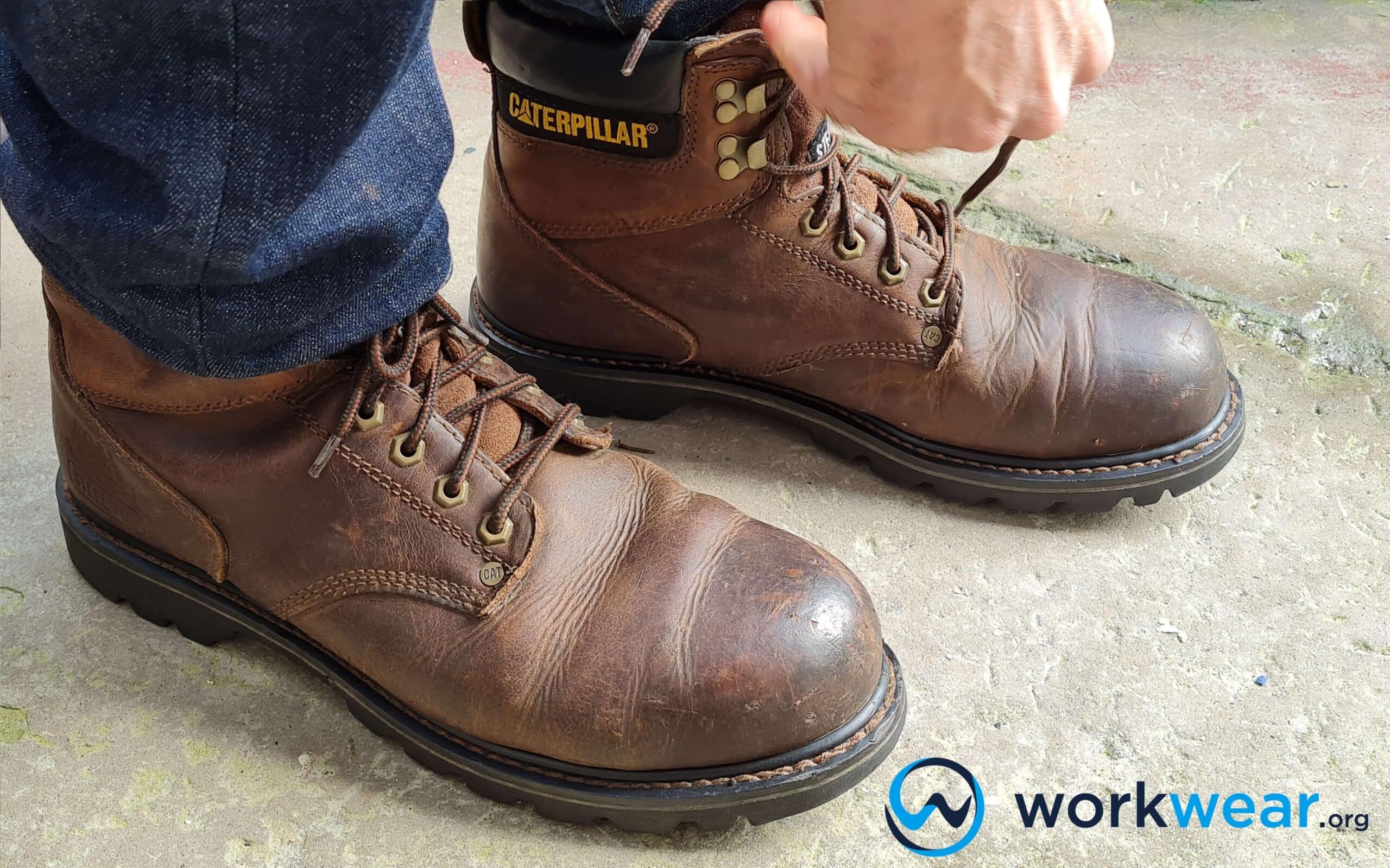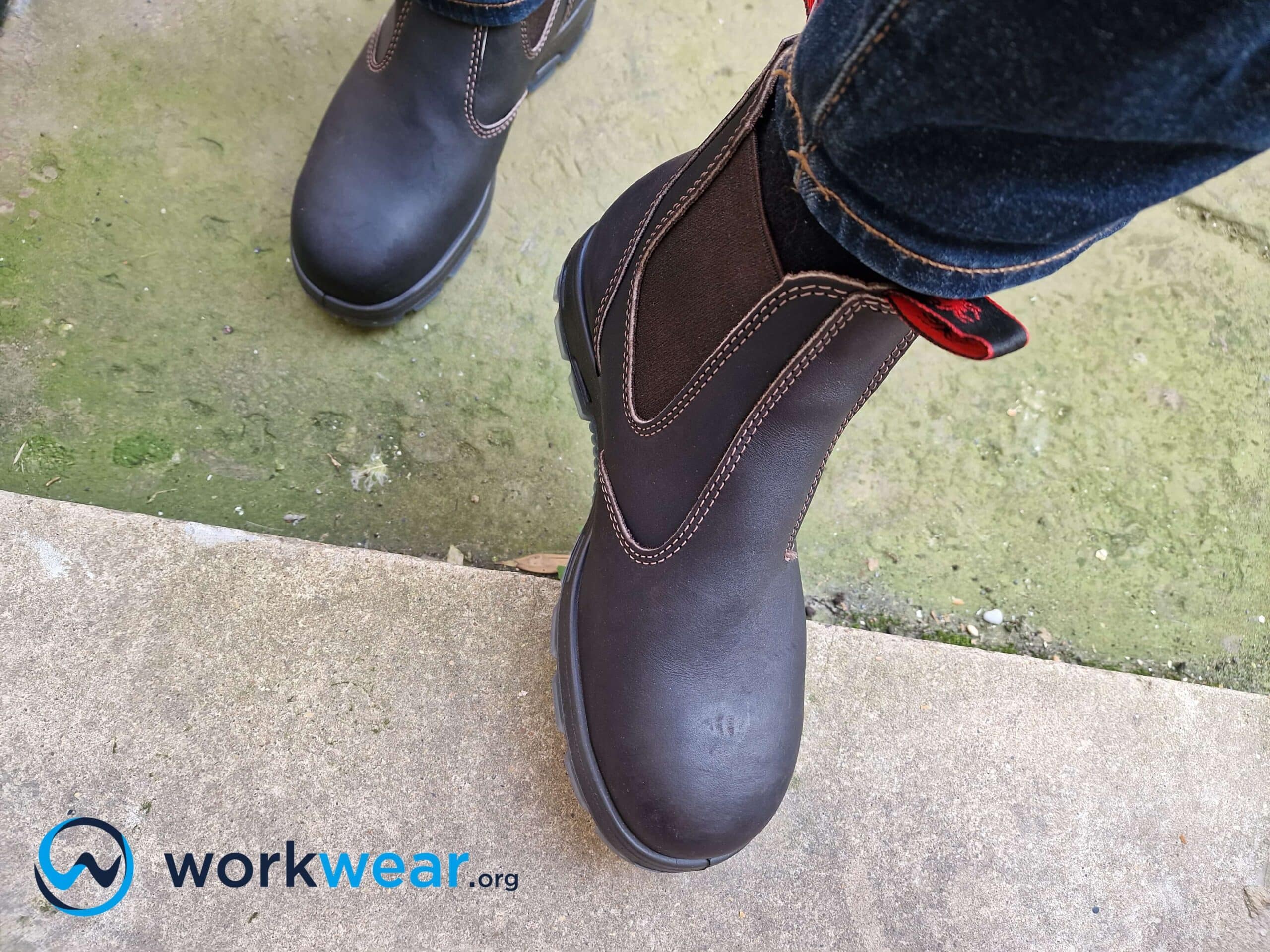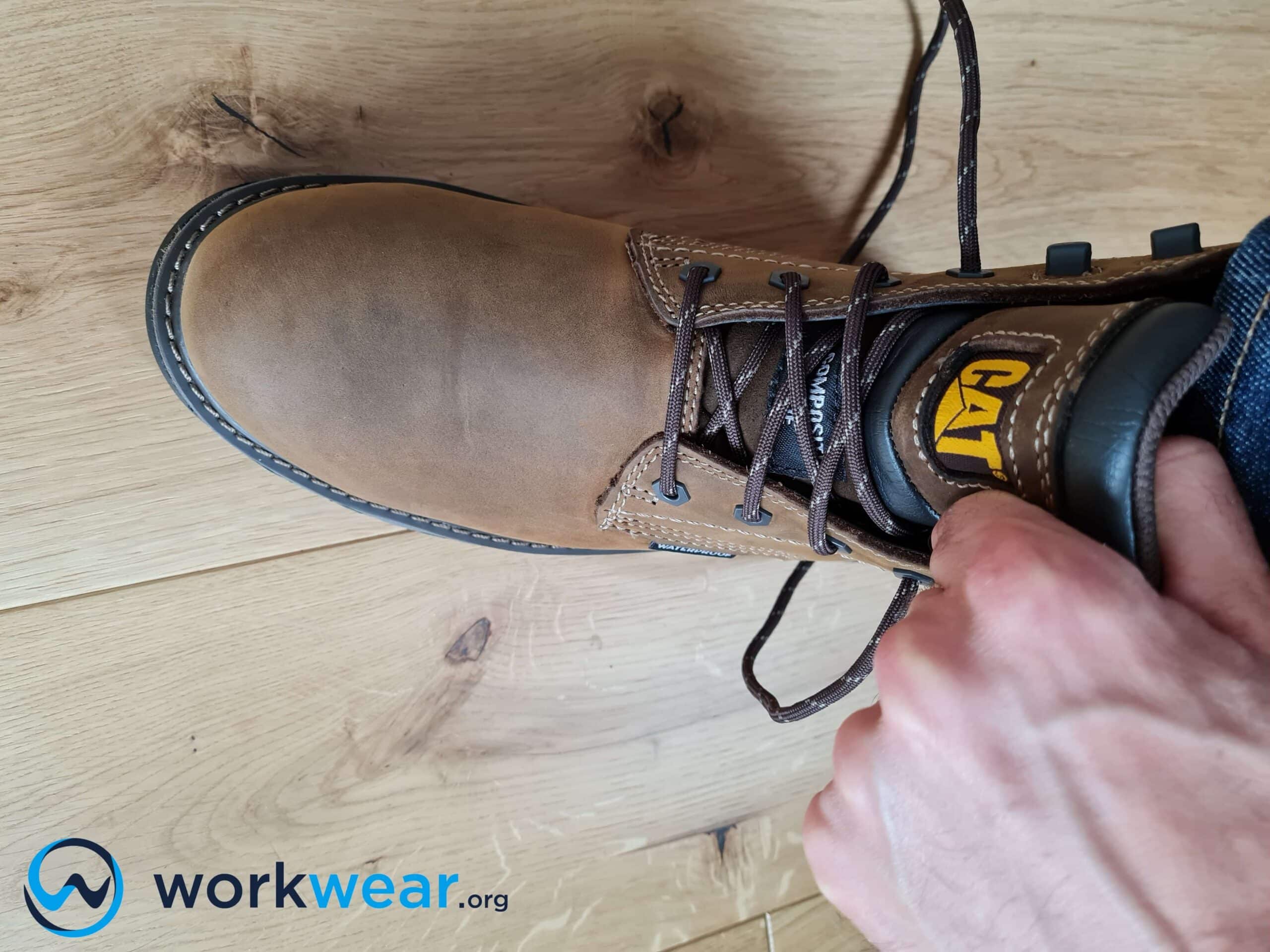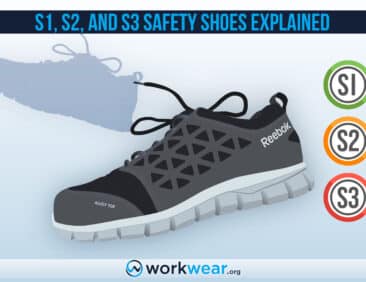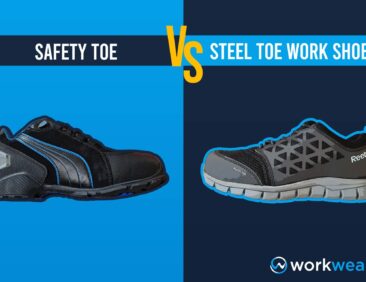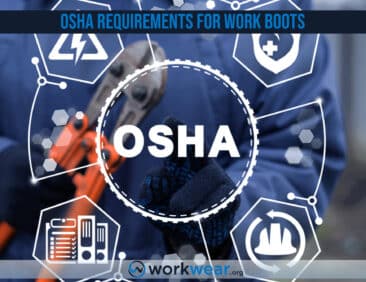Are Lace-up Work Boots Safer than Zip-Up and Slip-On Boots? A Certified Safety Professional Answers!

If you’re an employee, tradesman or tradeswoman who spends long hours on your feet in a hazardous industrial setting, you know how crucial it is to have the right footwear to protect your feet and minimize the risk of injuries. The Occupational Safety and Health Administration (OSHA) has mandated employers to provide protective footwear to workers in industries with potential hazards to their feet. But what type of protective footwear is best equipped to handle ankle protection? Which style- lace-up, slip-on, or zip-up- is the safest? In this post, we’ll look at how to answer that question.
Protective Footwear Requirements and Types
First and foremost, let’s clarify what protective footwear entails. According to OSHA’s standard 1910.136, protective footwear must be provided when there is a danger of foot injuries from falling or rolling objects, electrical hazards, and puncture hazards to the sole. However, OSHA doesn’t specify the need for ankle protection in all types of safety footwear, acknowledging the necessity of ankle mobility. OSHA also requires that protective footwear meet ASTM or ANSI testing and performance standards.
When perusing the market for work boots, you’ll typically encounter three distinct types: lace-up, slip-on, and zip-up styles. Lace-ups are traditional and offer a secure fit, with laces running up the front of the boot, allowing for adjustable tightness. Slip-on styles, similar to cowboy boots, provide ease of use with no laces or zippers. They typically have a looser fit, which some find more comfortable for long wear. Lastly, zip-up boots combine the advantages of the other two types. They offer the snugness of lace-ups and the convenience of slip-on, with a zipper on the side for easy on and off. While there may be other styles or variations, these three remain among the most prominent options in most work environments.
While it’s undeniable that lace-up style boots offer a certain level of ankle support, it’s important to examine this belief critically. Yes, these boots provide a snug fit and limit how much an ankle might roll if twisted, but this doesn’t necessarily make them the best universal solution for worker safety.
A Comparison of Protective Footwear for Ankle Protection
To thoroughly evaluate the comparative ankle protection offered by lace-up style work boots, it is crucial to delve into the advantages and disadvantages of different work boots, including slip-on and zip-up variations. For this evaluation, we’ll assume that any boots being considered are over the ankle and are OSHA compliant.
Lace-Up Boots
When donned correctly, lace-up boots offer a snug, adjustable fit on the foot and ankle. They allow significant ankle mobility while still providing significant support. They are less supportive if not worn laced up, as some employees may be inclined to do. If they are not laced up, they lack any significant protection and support for ankles and provide a trip hazard due to the dangling laces. It could be considered simple to say that you require your employees to wear them correctly. Still, it’s been my experience that you must have a strong culture of setting employees up for success and then holding them accountable to do as company policy dictates.
A considerable drawback of lace-up boots is their limited adaptability to certain specialized circumstances unless substantially supplemented. For instance, consider someone primarily operating heavy equipment but also serving as a backup welder. In such a situation, more than their general duty lace-up boots would be needed for their welding tasks. Welding involves exposure to extremely hot materials, and the boots’ laces are vulnerable to sparks and molten metal. This poses significant safety risks, especially if the boot doesn’t have metatarsal protection or a tongue capable of handling extremely hot materials. Therefore, lace-ups would need to be augmented with additional protective gear, like leather spats or gaiters, to be suitable for such situations, making them less practical and potentially more costly.
Zip-Up and Slip-On Boots
Zip-up and slip-on style boots offer a significant advantage in specialty situations, such as wet, muddy conditions or when performing hot work tasks. Their design makes them highly adaptable and practical.
Zip-up boots, on one hand, feature a full zipper along the back of the boot that provides an easy means to put them on or take them off, and some can also be securely fastened with a Velcro strap. On the other hand, slip-on styles have no laces and often feature elasticated sides to allow for easier access.
With their continuous or nearly continuous construction, zip-up and slip-on boots greatly mitigate the risk of harmful substances such as mud, water, chemicals, or hot substances from infiltrating. This contiguous design leaves few if any, gaps that could otherwise allow these materials to penetrate. As such, these boots can offer comprehensive protection and serve as a one-stop solution for workers. Granted, they need to be specifically constructed for the range of general and specialized tasks that the wearer might be involved in. But when they are, they provide a level of utility and safety that is hard to beat. This adaptability and practicality might explain why many workers prefer zip-up and slip-on boots for their day-to-day operations.
However, it’s crucial to note that the fit tends not to be as snug in the case of slip-on boots. Consequently, these boots allow for more play in the ankle.
This could benefit ankle mobility, allowing for a greater range of motion and flexibility during movement. However, this could also be detrimental when it comes to minimizing the risk of rolling ankle injuries, particularly when navigating uneven terrain. This is due to the increased movement allowed by the looser fit, which could lead to instability if one is not careful. Additionally, it’s important that hot work protective clothing, such as pants or chaps, are worn outside of the boot. Otherwise, the hot materials could fall into a looser fitting slip-on boot. Thus, while these boots offer significant advantages, their suitability should be assessed based on the specific environmental conditions and tasks at hand.
Evaluate Your Situation and Strategy
If you’re a company that has chosen to almost exclusively utilize lace-up boots for your workforce, it’s important to ask yourself some questions. Have you noticed a decrease in ankle injuries since making the switch? Are you aware of what your ankle injury rates were before introducing lace-up boots? Have you monitored anything related to the use of lace-up boots? If your answer is ‘no’ to any or all of these queries, then it might be time to start paying attention.
Analyzing your data is the first step towards making informed decisions to enhance worker safety. By understanding the impact of your choices, such as the switch to lace-up boots, you can accurately gauge their effectiveness. This not only helps in justifying the investment but also in identifying areas for potential improvement.
So, if you haven’t already, start tracking your ankle injury rates. Look at the changes over time and correlate them with your switch to lace-up boots. It’s never too late to start, and the insights you gain could be instrumental in enhancing the safety and productivity of your workforce.
Consider the Full Picture
It’s also crucial to look beyond the data and consider factors like proper usage, overall ease of use, and adaptability to different job roles. If employees aren’t wearing their lace-up boots correctly or find them too cumbersome, you might not be reaping the benefits you anticipate. Similarly, if the boots aren’t adaptable to different job roles, you could inadvertently be creating additional obstacles for your workforce.
Limiting yourself to solely lace-up boots might not provide the net benefit you envision. If after thorough assessment, you find that the gains of correctly worn lace-up boots over slip-on or zip-up styles are slight or negligible, but the latter two present significant advantages, you need to reconsider your safety footwear strategy. Could you be unnecessarily complicating tasks and impacting company culture negatively?
Asking these questions and making an earnest evaluation of the situation can guide you toward the optimal safety footwear choice for your company. It’s about enhancing safety without sacrificing comfort, usability, and adaptability in different jobs — a balance that ensures both employee satisfaction and productivity.
Do a Trial of Alternative Boot Options
I understand if you’re hesitant about making a drastic change in your safety footwear strategy. That’s absolutely fine. How about considering a trial run of a different type of boot- the zip-up style? They offer a snug fit like lace-up boots, but with a convenience similar to that of slip-on styles, thus serving as a reasonable intermediate between the two.
To get started, identify a site or department with higher rates of ankle injuries. Define the duration of the trial, and determine the conditions, such as a significant increase in injuries (which you define), that would call for a pause or termination of the trial.
Remember, it’s vital to examine the causes of these injuries. It would be counterproductive to disqualify the zip-up boot for injuries where a lace-up boot would have yielded the same result.
Include a mechanism for gathering feedback from the trial participants. What are their preferences, and why? After the trial, assess whether providing more access to zip-up boots is beneficial.
If this trial proves successful, consider replicating the process with slip-on boots or other styles that meet OSHA requirements. By doing so, you’ll be well on your way to finding the optimal safety footwear solution for your team.
Conclusion
Making informed decisions on appropriate footwear types for your workplace is critical. It’s advisable to make decisions with a robust evidence base. Should you aim to provide protective footwear that also offers ankle protection, your decision should hinge on what your evaluations suggest you need. For instance, if you believe a snug fit is required that allows some degree of ankle mobility but also offers some movement restrictions to guard against ankle rolls, explore any compliant footwear that fits these criteria.
It’s vital to consider your workplace and the various jobs holistically so that you can make the best decisions in terms of protection, versatility, and comfort. Remember, the easier you make things for your employees, the greater the likelihood they’ll adhere to wearing them and avoid taking shortcuts. In turn, this ensures you reap the benefits with less effort spent on enforcing the protective footwear strategy.
678+
Products Reviewed
24+ Years
Combined Experience
500+ Hrs
Field Testing
